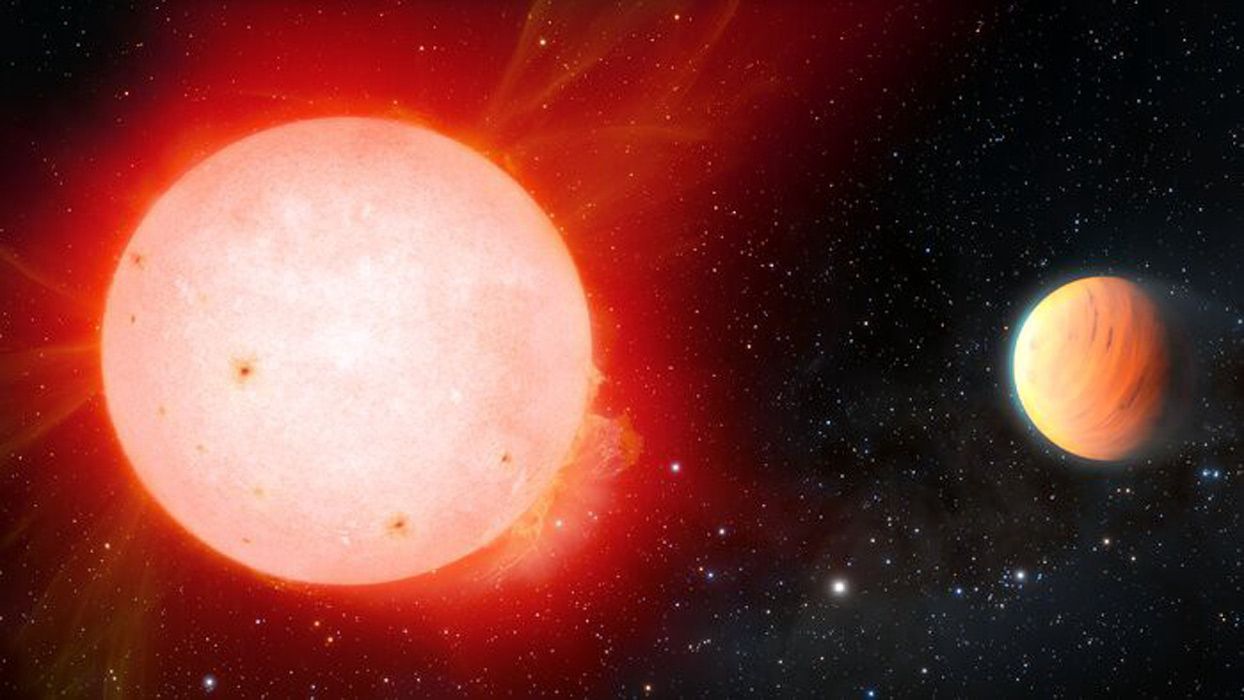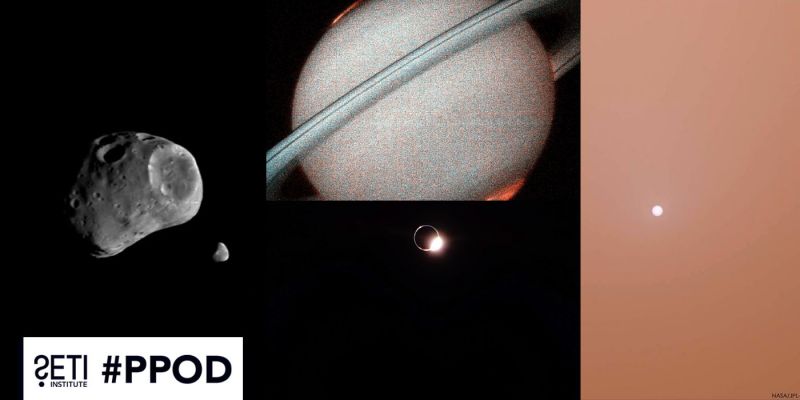An exoplanet found orbiting a red dwarf star turns out to have the density of a marshmallow, surprising researchers who didn’t expect a planet with an atmosphere that close to an active star.

By Beth Johnson
Astronomers at Kitt Peak have discovered a Jupiter-ish planet orbiting a red dwarf. Now, you know we only bring you exoplanet stories when there is something unusual, and as always, this release is no exception. This planet, TOI-3757 b, has the density of a marshmallow, making this the lowest-density planet ever detected, coming in at a mere 0.27 grams per cubic centimeter. That’s less than half the density of our own planet Saturn.
This strange exoplanet was found in data taken by NASA’s TESS spacecraft, which uses the transition method of detection — measuring the change of the star’s light as the planet passes between the star and the spacecraft. From those measurements, researchers calculated the gas giant has a diameter of 150,000 kilometers. For reference, Jupiter is slightly smaller.
As a follow-up to the space observations, the research team took measurements with two different instruments — NEID and NESSI — at the WIYN 3.5-meter Telescope, as well as with the Habitable-zone Planet Finder (HPF) on the Hobby-Eberly Telescope and the Red Buttes Observatory (RBO). These measurements included the apparent motion of the parent star, also known as the radial velocity, which provided the planet’s mass — only a quarter that of Jupiter.
And from there, using the simple formula of mass divided by volume, this close-in world can (like Saturn) float in a big enough bathtub of water.
Not only is the density incredibly low, but since red dwarf stars are well known for their powerful flares, and this planet orbits the star in only 3.5 days, scientists were surprised to find such a wispy world. Those flares tend to strip planets of their atmospheres, and frankly, TOI-3757 b seems like it shouldn’t exist.
The team who made the discovery has a possible answer for the why of this unusual world’s existence. Per the press release: They propose that the extra-low density of TOI-3757 b could be the result of two factors. The first relates to the rocky core of the planet; gas giants are thought to begin as massive rocky cores about ten times the mass of Earth, at which point they rapidly pull in large amounts of neighboring gas to form the gas giants we see today. TOI-3757b’s star has a lower abundance of heavy elements compared to other M-dwarfs with gas giants, and this may have resulted in the rocky core forming more slowly, delaying the onset of gas accretion and therefore affecting the planet’s overall density.
Additionally, that second factor could be the planet’s orbit which appears to be slightly elliptical, meaning that TOI-3757 b moves closer to the star at some times than others, and the excess heating on the closer portions of the orbit could cause the atmosphere to puff out.
The team is now on a quest to find for more examples of wispy giant planets in similar systems, and they plan to request time on JWST to learn more about this world as well. As second author Jessica Libby-Roberts notes: Potential future observations of the atmosphere of this planet using NASA’s new James Webb Space Telescope could help shed light on its puffy nature.
We wish them luck and good hunting.
This research was published in The Astronomical Journal with lead author Shubham Kanodia.
More Information
- NOIRLab press release
- “TOI-3757 b: A Low-density Gas Giant Orbiting a Solar-metallicity M Dwarf,” Shubham Kanodia et al., 2022 August 5, The Astronomical Journal
This story was written for the Daily Space podcast/YouTube series. Want more news from myself, Dr. Pamela Gay, and Erik Madaus? Check out DailySpace.org.
This article was originally published for medium.com.





